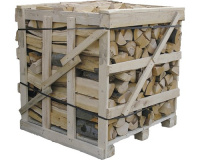solid fuel
A solid fuel is a fuel in a solid state.
Solid fuel technology
This industry deals with:
a) by converting chemical energy accumulated in primary fuels into thermal energy,
b) by transforming primary fuels into more noble forms (smokeless solid, liquid and solid fuels),
c) by producing products or raw materials more valuable than the starting primary fuel.
By using fuels in more noble forms, not only a saving effect is achieved (the possibility of automation and regulation), but also a higher quality of the obtained products, the possibility of mechanizing production processes, and thus also increasing performance.
and savings in human labor, as well as greater cleanliness of the working environment, etc.
Combustion heat and calorific value of fuels
A characteristic feature of organic synthesis in plants is the accumulation of chemical energy, which is obtained at the expense of the energy of solar radiation. Plants in sunlight synthesize complex organic compounds with the help of chlorophyll (as a catalyst), from carbon dioxide (which is 0.04% in the atmosphere on average) and water.
Organic substances and oxygen are created by photosynthesis according to the simplest scheme. The product of this reaction, which took place in the distant past, is fossil fuels, primarily coal. Currently, this is how wood and peat are created. By burning the fuels into carbon dioxide and water from which the fuel was once created, solar energy is released in the form of heat and the carbon cycle in nature is closed.
The energy value of a solid fuel is the total amount of heat that is released by the perfect combustion of its unit amount. By burning fuels in conventional heating systems, their full energy value cannot be used, because unused heat retained in combustion products, especially water vapor, escapes in the flue gases. Therefore, from the point of view of the thermal use of fuels, we distinguish combustion heat and calorific value.
The amount of heat released by the complete combustion of 1 kg of fuel (1 m3 of gases) and the cooling of the combustion products to the original temperature, while the water vapor condenses to water and its heat of vaporization is released, is called the heat of combustion. In practice, however, we cannot cool the combustion products so that the water vapor condenses. The water present in the burned fuel and the water produced by the burning of hydrogen in the fuel always escapes in the combustion products in the form of steam without transferring its heat of vaporization. The combustion heat of the fuel is therefore only used as calorific value.
The calorific value of the fuel is therefore the heat of combustion reduced by the heat of vaporization of the water contained in the combustion products.
Combustion heat and calorific value of fuels are expressed in kJ.kg-1 or kJ.m-3. The heat of combustion of fuels is determined using a calorimeter, and the calorific value is derived from the heat of combustion by subtracting the heat of vaporization from the determined amount of water produced.

